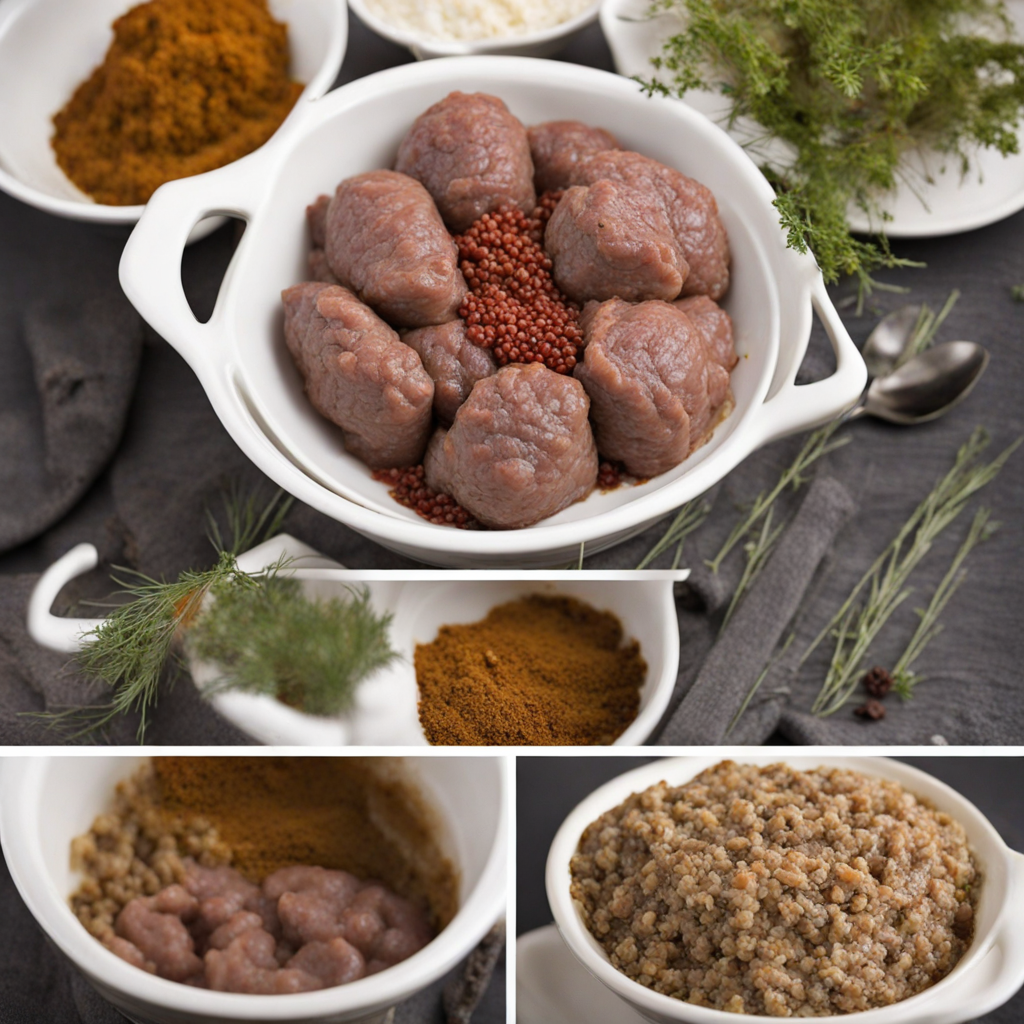Slátur
Slátur, a traditional Icelandic dish, is a unique culinary experience that reflects the country’s rich heritage of resourcefulness and sustainability. This dish primarily consists of sheep’s offal, including the liver, heart, and lungs, which are carefully prepared and seasoned before being encased in the sheep’s stomach. The result is a hearty, robust flavor that is both earthy and deeply savory. It's often enjoyed during the autumn season, particularly as part of the Þorrablót festival, where it is celebrated alongside other traditional foods, showcasing the Icelandic love for preserving and honoring their culinary traditions. When you take a bite of Slátur, you'll encounter a wonderfully textured filling that combines the rich gaminess of sheep's organs with a blend of spices such as salt, pepper, and perhaps a touch of allspice. The stomach casing gives it a distinctive presentation and a slightly chewy texture that balances well with the tender filling. It's often served with side dishes like rutabaga or potatoes, which help to complement the rich flavors and add a comforting element to the meal, grounding the dish in more familiar tastes. The experience of eating Slátur goes beyond just flavor; it is a connection to Iceland's past, steeped in the traditions of a time when every part of an animal was utilized to minimize waste. For those adventurous enough to embrace this dish, Slátur offers a taste of Icelandic history and culture, inviting you to savor the depth and complexity of flavors that can be found in simple, honest ingredients. Each bite is a celebration of the land and its resources, making it a must-try for anyone looking to explore new and authentic culinary experiences.
How It Became This Dish
Slátur is a traditional Icelandic dish that has its roots deeply embedded in the island’s agrarian culture, particularly during the long, harsh winters. The word "slátur" translates to “slaughter” in English, a term that reflects its origin tied to the autumnal slaughter of sheep. This practice dates back to the Viking Age, when Icelandic settlers brought their livestock with them to the island. With a limited range of livestock capable of surviving in the rugged Icelandic terrain, sheep became a staple, and the practice of utilizing every part of the animal was essential for survival. The preparation of slátur traditionally occurs during the Þorri, a midwinter festival that celebrates the old Norse calendar month. This festival, which typically falls between January and February, is not just a time for food but also a cultural event where communities come together to celebrate their heritage. Slátur is often served during this time as a way to honor the old ways and maintain a connection to Icelandic roots. The dish itself consists mainly of sheep offal, including the lungs, liver, and heart, which are mixed with fat and barley, seasoned, and then stuffed into the animal’s stomach to create a type of sausage. Ingredients and Preparation The ingredients of slátur may vary slightly from region to region, but the core components remain consistent. The offal is typically boiled before being chopped finely and mixed with a variety of spices, salt, and sometimes oatmeal or barley, which adds a unique texture to the final product. The mixture is then encased in the cleaned stomach of the sheep, which acts as a natural casing. After being filled, the stomach is tied off and typically boiled again to ensure that the contents are thoroughly cooked. Once prepared, slátur can be served in a variety of ways. Some prefer it sliced and fried, while others enjoy it served cold. It’s often accompanied by potatoes, flatbread, or rye bread, and sometimes a side of skyr, a traditional Icelandic dairy product. The dish has a rich, savory flavor profile that reflects the resourcefulness of the Icelandic people, who have historically made use of every part of the animal to avoid waste. \n Cultural Significance Slátur is more than just a dish; it embodies the spirit of Icelandic culture and identity. The practice of making slátur is a nod to the past, a way to remember the hard times faced by earlier generations who relied on such methods for sustenance. It highlights the importance of community as families and neighbors would often come together for the slaughtering season, sharing labor and resources. This communal approach fostered a sense of connection and solidarity that is still valued in Icelandic society today. Moreover, slátur plays a significant role in Icelandic folklore and traditions. Stories and songs celebrating the harvest and the slaughtering process are often recounted during gatherings, reinforcing the bond between food, culture, and storytelling. The consumption of slátur during Þorri is also seen as a way to honor the old gods and the natural cycles of life and death, bridging the past with the present. \n Evolution Over Time Throughout the years, slátur has undergone various transformations, especially in response to changing dietary habits and modern influences. The dish has faced challenges, particularly as global culinary trends have shifted towards lighter, more contemporary fare. As a result, slátur is not as commonly prepared in everyday households as it once was. However, it remains a staple during festive occasions, reflecting a revival of interest in traditional Icelandic cuisine. In recent years, there has been a renewed appreciation for traditional foods, spurred by a broader movement towards local and sustainable eating practices. Chefs and home cooks alike are increasingly drawn to the idea of nose-to-tail cooking, which emphasizes using all parts of an animal, thereby reducing waste and honoring the animal's life. This shift has led to a resurgence of interest in slátur, as more people seek to reconnect with their culinary heritage. Furthermore, the globalization of food culture has allowed Icelanders to share their traditional foods with the world. Slátur, along with other traditional dishes, has been featured in culinary festivals and events, both locally and internationally. This exposure has not only helped to preserve the dish but has also allowed it to evolve, as chefs experiment with modern twists on the traditional recipe, incorporating new flavors and techniques while still respecting its origins. \n Modern Interpretations Today, slátur can be found in various forms, ranging from artisanal versions made by local producers to innovative interpretations in high-end restaurants. Some chefs have begun to serve slátur with gourmet accompaniments, such as truffle oil or microgreens, while others are exploring fusion cuisines that blend Icelandic traditions with international flavors. This evolution keeps the dish relevant in contemporary culinary conversations while preserving its historical significance. Additionally, there is a growing movement towards educating younger generations about traditional foods, ensuring that the knowledge and skills associated with making slátur are passed down. Cooking classes and workshops focusing on traditional Icelandic cuisine are becoming more common, allowing participants to learn the techniques involved in preparing slátur and other traditional dishes. This not only fosters a sense of pride in Icelandic heritage but also encourages a sustainable approach to food consumption. \n In conclusion, slátur is a dish that encapsulates the essence of Icelandic culture, history, and resilience. From its origins in the Viking Age to its modern interpretations, the dish serves as a reminder of the resourcefulness of the Icelandic people and their deep connection to the land and its traditions. As culinary practices continue to evolve, slátur stands as a testament to the enduring legacy of Icelandic food culture, bridging the past and present while paving the way for future generations to appreciate and celebrate their culinary heritage.
You may like
Discover local flavors from Iceland







